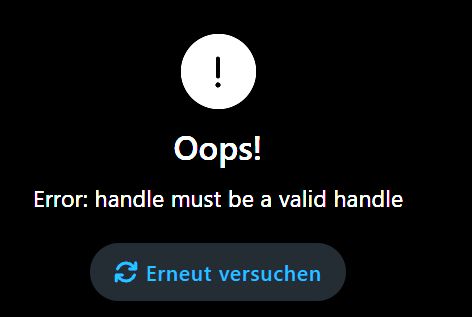
1. gets a curve to be close to (ideally passes through) an ordered set of data points
2. while avoiding itself
Your works on tangent point energies seems related but I'm unsure about part 1
1. gets a curve to be close to (ideally passes through) an ordered set of data points
2. while avoiding itself
Your works on tangent point energies seems related but I'm unsure about part 1
Issue in chapter 3
![___________________________________________
############################################################################################
ERROR in
action number 1
of Draw Event
for object obj_dw_teevie_tv_screens_treasure:
Variable Index [0] out of range [0]
at gml_Object_obj_dw_teevie_tv_screens_treasure_Draw_0
############################################################################################
gml_Object_obj_dw_teevie_tv_screens_treasure_Draw_0 (line -1)](https://cdn.bsky.app/img/feed_thumbnail/plain/did:plc:ake2qxylevclcacjygmeiad5/bafkreidf4q7cpx4szna4p2asq3hn3iwk2ewcbvkkyhr4ducntfsjy674ie@jpeg)
Issue in chapter 3
www.youtube.com/watch?v=xNm-...
www.cs.cmu.edu/~kmcrane/Pro...
Dice of any shape with any probabilities

www.youtube.com/watch?v=xNm-...
www.cs.cmu.edu/~kmcrane/Pro...
Dice of any shape with any probabilities
Official EU Citizens' Initiative against conversion therapy
There isn't much time left but support grows very fast right now. As of yesterday, the seven states hurdle was passed, now it's just down to the last <380000 signatures

Official EU Citizens' Initiative against conversion therapy
There isn't much time left but support grows very fast right now. As of yesterday, the seven states hurdle was passed, now it's just down to the last <380000 signatures
I'd like to see variants that try to separate the periodic (time of day, week, year, month) and nonperiodic effects as well as logarithmic graphs.
The ability to switch off parts would also be good. English is too dominant
I'd like to see variants that try to separate the periodic (time of day, week, year, month) and nonperiodic effects as well as logarithmic graphs.
The ability to switch off parts would also be good. English is too dominant


![An example Bsky profile featuring, at the bottom, a sample of people you follow that also follow this account. (Here in German)
It reads "followed by [user 1], [user 2] and NaN others"](https://cdn.bsky.app/img/feed_thumbnail/plain/did:plc:ake2qxylevclcacjygmeiad5/bafkreidkx6dtkt44nncs2gfgqvf3iuybutazfvggsggczsyeclgz5oogla@jpeg)
you say "unreality" but the subtitle says "reality"
you say "unreality" but the subtitle says "reality"


